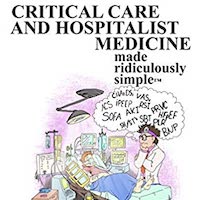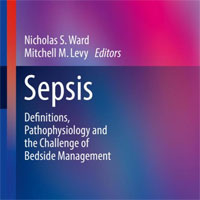Tag: resuscitation
EROCA: Results of a Randomized Feasibility Trial of Expedited Out-of-Hospital Transport
Outcomes of extracorporeal cardiopulmonary resuscitation (ECPR) for out-of-hospital cardiac arrest depend on time to therapy initiation. We hypothesize that it would be feasible to select refractory out-of-hospital cardiac... read more
Association between the BMI and outcomes of patients resuscitated from OHCA
The body mass index (BMI) was not independently associated with favourable neurologic and survival outcomes of patients surviving from out-of-hospital cardiac arrest (OHCA). Nine hospitals were enrolled; finally, 605 patients... read more
Overcoming Enteral Nutrition Delivery Challenges in Critical Care
It is the essential implementation of this new evidence occurs to overcome real and perceived EN challenges. This data should lead to increased standardization/protocolization of ICU nutrition therapy to ensure personalized... read more
The Impact of Defibrillation on Aerosol Generation During CPR
Chest compressions alone did not cause significant aerosol generation in this swine model. However, increased aerosol generation was detected during chest compression immediately following defibrillation. Additional research... read more
Effect of Out-of-Hospital Sodium Nitrite on Survival to Hospital Admission After Cardiac Arrest
Among patients with out-of-hospital cardiac arrest, administration of sodium nitrite, compared with placebo, did not significantly improve survival to hospital admission. These findings do not support the use of sodium nitrite... read more
Prediction of Neurological Outcomes in Patients Treated With ECPR
This prognostic study develops and validates a prediction model for neurological outcomes of patients with out-of-hospital cardiac arrest with shockable rhythm treated with extracorporeal cardiopulmonary resuscitation. A... read more
Decrease in CPR Initiation During COVID-19 Outbreak
During the COVID-19 period, we observed decreased initiation of CPR by bystanders and first aid providers for BLS, and decreased ALS by the MMT, regardless if subjects were infected with SARS-CoV-2 or not. ROSC rates... read more
Microtools to Identify and Resuscitate Microcirculatory Dysfunction in Critically Ill Patients
Despite recent advances in the timely restoration of impairments in the oxygen supply chain to the tissue (Yealy et al. 2014; Peake et al. 2014; Mouncey et al. 2015), circulatory shock remains a major contributor to mortality... read more
The Use of Venous Doppler to Predict Adverse Kidney Events in a General ICU Cohort
This study indicates that portal and hepatic flows may be clinical useful tools to help identify patients at risk for renal injury. It is likely that they are indicative of elevated right atrial pressure causing venous congestion,... read more
Viscoelastic Hemostatic Assay Augmented Protocols for Major Trauma Hemorrhage
Our international randomized trial has evaluated the role of VHAs to individualize care and augment empiric hemostatic resuscitation in the challenging and time-critical environment of trauma care. Empiric haemostatic therapy... read more
TEG for Hypocoagulable Patients with Non-Traumatic Bleeding
Thromboelastogram (TEG) has been extensively studied in trauma and surgical patients, but has not been well studied in nontraumatic bleeding, nor has its use been well evaluated in the emergency department. This study... read more
Limiting Radiation in Trauma Imaging & Trauma Resuscitation
Appropriate clinical decision-making in the initial evaluation and management of trauma patients in the emergency department is critical to optimize patient outcomes. This supplement provides evidence-based recommendations... read more
Scvo2 in Sepsis: A Measurement Provided by Respiratory Care Practitioners
When treating patients with sepsis, intensive care unit (ICU) and emergency department clinicians have learned that improved outcomes occur when staff members work together as a team. This article outlines the value of central... read more
Critical Care and Hospitalist Medicine Made Ridiculously Simple
A fundamental and thorough guide to the treatment of hospitalized patients in critical care situations, "Critical Care and Hospitalist Medicine Made Ridiculously Simple" provides both introductory information as well as a... read more

Clinical Experience of Whole-body CT as the Initial Evaluation Tool After ECPR in OHCA Patients
Routine whole-body computed tomography (CT) after extracorporeal cardiopulmonary resuscitation (ECPR) in out-of-hospital cardiac arrest (OHCA) patients appears to have a limited role, as the majority is caused by ACS. However,... read more
Cardiopulmonary Resuscitation in the Emergency Department During COVID-19
Emergency medical services (EMS) is called for a 65-year-old man with a 1-week history of cough, fever, and mild shortness of breath now reporting chest pain. Vitals on scene were HR 110, BP 135/90, SpO2 88% on room air.... read more
Clinical Characteristics of 58 Children With a Pediatric Inflammatory Multisystem Syndrome Temporally Associated With SARS-CoV-2
In this case series of hospitalized children who met criteria for PIMS-TS, there was a wide spectrum of presenting signs and symptoms and disease severity, ranging from fever and inflammation to myocardial injury, shock,... read more
Enteral Fluid Resuscitation? The WHO to the rescue in the ED/ICU?
Prior to the 1970's, restricting oral intake was a "cornerstone" therapy of diarrheal illness, due to the pervasive belief that the GI tract needed time to heal and recover before resuming normal function. This was felt... read more
Outcomes With the Use of Bag-Valve-Mask Ventilation During Out-of-hospital Cardiac Arrest in the Pragmatic Airway Resuscitation Trial
Bag-valve-mask-only ventilation is associated with improved OHCA outcomes. Despite similar rates of ROSC and 72-hour survival, BVM-rescue ventilation was associated with improved survival to discharge and neurologically intact... read more
CPR Algorithm Adjustments when Caring for Suspected or Confirmed COVID Cases
When caring for confirmed COVID-19 cases, it is essential for healthcare providers to protect themselves from exposure as best they can. Healthcare providers who contract COVID-19 can increase the burden on an already... read more
How I Manage Drainage Insufficiency on ECMO
As the use of extracorporeal membrane oxygenation (ECMO) expands, a systematic approach to the management of complex technical issues, such as drainage insufficiency, is essential to improving patient outcomes. Due to... read more
Small Compact Resuscitation Device Safely Used on Patient with COVID-19
A small compact and portable resuscitation ventilation device built by PRIMEDIC OXYLATOR, was safely used to treat a patient with COVID-19 pneumonia in the intensive care unit (ICU). The Oxylator from Primedic is a combination... read more









